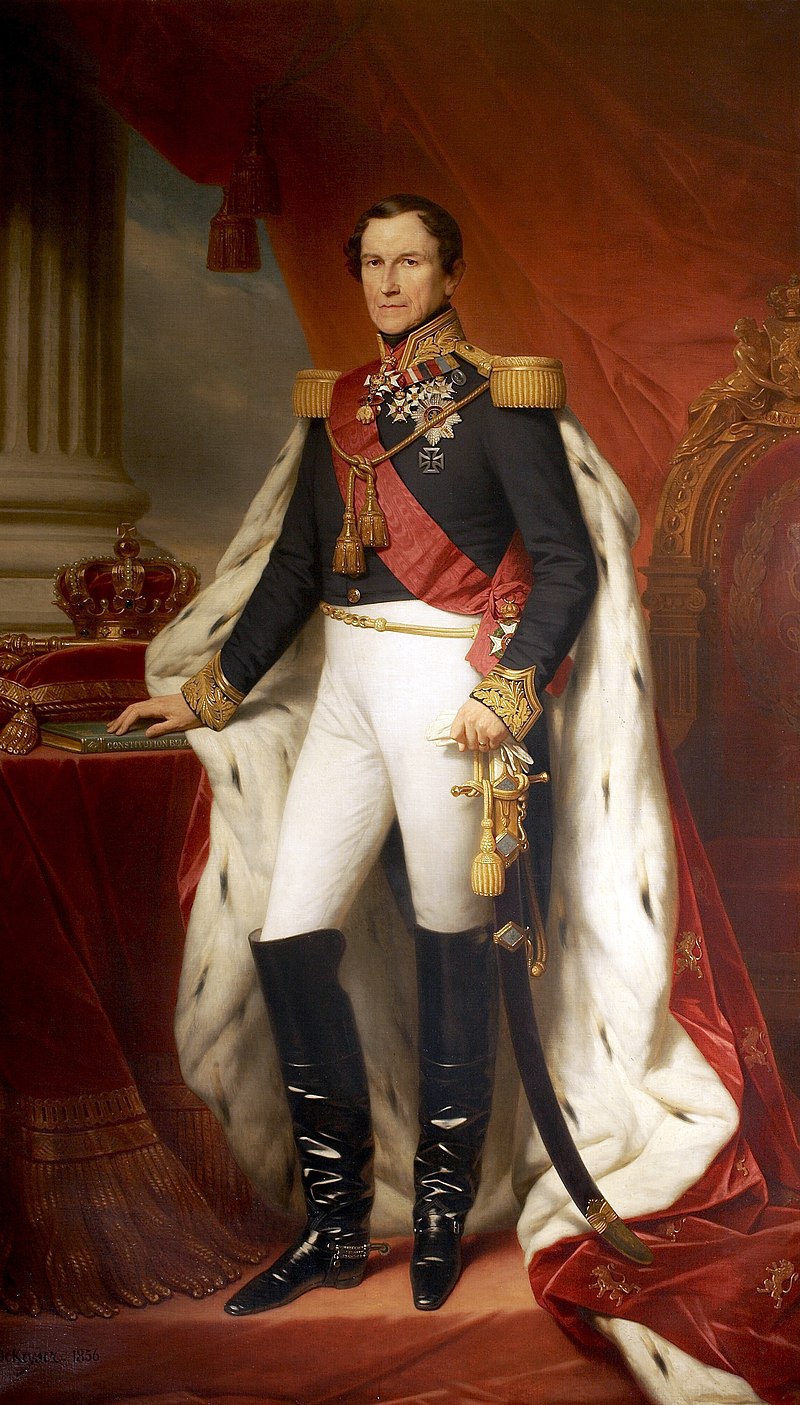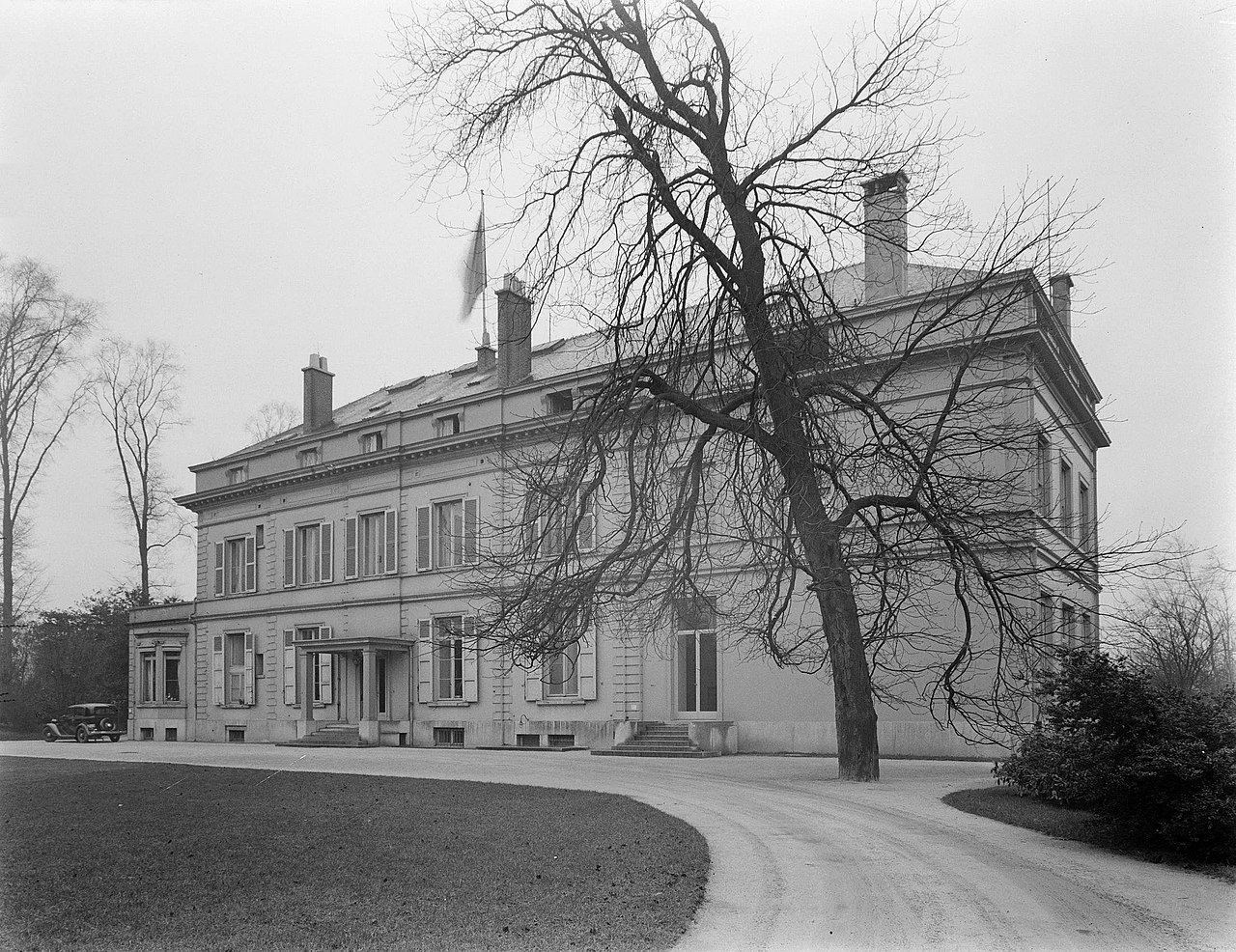by Scott Mehl © Unofficial Royalty 2020
Arcadie Claret was the mistress of King Leopold I of the Belgians from around 1842 until the King’s death in 1865.

Arcadie Claret, Baroness von Eppinghoven. source: Wikipedia
Marie Anne Arcadie Eugénie Claret was born in Brussels on May 30, 1826, one of thirteen children of Major Charles-Joseph Claret and Henriette Neetesonne. Her father was a veteran of Napoleon’s army and the treasurer of the Ministry of War’s Fund for Widows and Orphans of the Belgian Army.

Leopold I of the Belgians. source: Wikipedia
Arcadie was just in her late teens when she became the mistress of King Leopold I. The King moved her into a grand house in Saint-Josse-ten-Node near Brussels, where he visited often. Because their relationship became publicly known and widely discussed in the press, Leopold arranged a marriage between Arcadie and Ferdinand Meyer, his Master of the Stable and friend. This marriage of convenience took place in 1845 and provided some relief from the intense speculation about Arcadie and her relationship with Leopold. Arcadie and Leopold had two sons together. Both were registered as the children of her husband, and given the surname Meyer:

Georg Meyer, Baron von Eppinghoven. source: Wikipedia
- Georg Meyer, Baron von Eppinghoven (November 14, 1849-February 3, 1904) – born at the monastery of Saint-Joseph des Filles de la Croix in Liège, served as an officer in the Prussian Army. He and his wife, Anna Brust (a former chambermaid of his mother’s), had three children. They lived primarily at the family farm in Langenfeld before his death in Monheim in 1904.

Arthur Meyer, Baron von Eppinghoven. source: Wikipedia
- Arthur Meyer, Baron von Eppinghoven (September 25, 1852 – November 9, 1940) – born at the Château de Stuyvenberg Laken, served as Grand Marshal of the Grand Ducal Court of Coburg. He and his wife, Anna Harris, had one daughter. After the fall of the German monarchies in 1918, he returned to Belgium, formally changing his surname to von Eppinghoven, and took Belgian citizenship. He received some financial support from his half-nephew, King Albert I of the Belgians, and is buried near the Royal Crypt in the cemetery of Laeken.
The subject of intense criticism following the birth of her first child, Arcadie left Belgium in late 1850, just days before King Leopold’s wife Queen Louise Marie, died. After living for a year in Germany, Arcadie returned to Belgium in the fall of 1851, determined to maintain a discreet profile. With financial help from Leopold, she purchased the Château de Stuyvenberg for 80,000 francs, just steps from the Palace of Laeken. Over the next few years, she had the Château enlarged to provide a home for her own family, her mother, and several siblings. Here, the King would often visit every day, enjoying a quiet family life with Arcadie and their sons.
In addition to purchasing Stuyvenberg, Arcadie received a farmhouse in Monheim, Germany, from the King in 1851. A modest residence – originally an abbey farm named Eppinghoven – Arcadie soon had a more substantial castle built and following the King’s death, she would spend the remainder of her life there.

Château de Stuyvenberg. source: Wikipedia
In 1862, a year after Arcadie and her husband formally separated, King Leopold I sought to secure the future of their sons. He attempted to have them elevated to the Belgian nobility but the government denied his request. Instead, he asked his nephew, Ernst II, Duke of Saxe-Coburg and Gotha, to establish noble titles within the Coburg nobility. Both George and Arthur were created Baron von Eppinghoven in 1862, and the following year, Arcadie was also elevated to Baroness von Eppinghoven. I 1870, Arcadie purchased a farm – the Langfort Domain – in Langenfeld for her sons – once again with the help of King Leopold and his generosity.
During the relationship, which lasted over 20 years, Arcadie and King Leopold were devoted to each other. She often accompanied him on his travels and visits abroad and maintained a peaceful and quiet home for the King in Belgium. Stuyvenberg became a refuge for him from the stresses of his role.
Following the King’s death in December 1865, Arcadie was no longer welcome within the Belgian royal family. Within days of his death, Arcadie and her sons left Brussels and settled at her castle in Monheim. Despite leaving, she maintained ownership of Stuyvenberg for the next 24 years before finally selling it – through an intermediary – to King Leopold II who later transferred it to the Royal Trust.
Arcadie Claret Meyer, Baroness von Eppinghoven, lived a quiet and private life in Monheim for the next 31 years before passing away there on January 13, 1897.
This article is the intellectual property of Unofficial Royalty and is NOT TO BE COPIED, EDITED, OR POSTED IN ANY FORM ON ANOTHER WEBSITE under any circumstances. It is permissible to use a link that directs to Unofficial Royalty.
